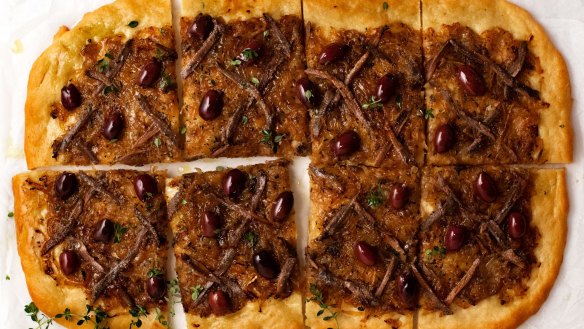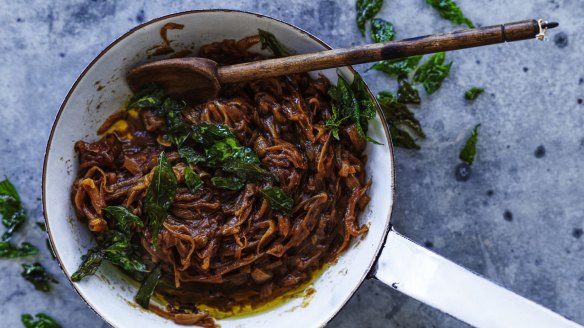What's the secret to perfect caramelised onions?

What is the secret to perfect caramelised onions? E. Pridmore
The real secret is patience and time. Caramelising onions sees heat change the structure of sugars in the onions, breaking them down into new compounds in a process called pyrolysis.
Before that, however, you need to get rid of a whole lot of water as onions are 87 per cent water. Slicing onions finely breaks open cell walls and increases surface area, which helps speed up the process and creates an evenly caramelised end result.
- Start on medium heat. A little oil or butter at the beginning of cooking stops the onions from sticking and burning. A little salt helps release the water.
- For the first few minutes, you're boiling the water away.
- Once the bulk of the water has boiled away, the onions will get hotter and reach the temperature needed for the sugars' structure to change. If onions are constantly stirred, they won't get hot enough.
- Don't stir them regularly, and they will burn. So leaving the onions for several minutes between stirring them with a wooden spoon allows them to get hot enough. Look for a change in colour and then stir.
- Reduce the heat. Older onions have greater sugar content and will caramelise faster.
- A little sugar added to the onions after they start to caramelise will help the process.
- If things get too hot, a little water will cool things down. It should take about 30-45 minutes to caramelise four onions, depending on their age and the heat source.
- If in doubt, reduce heat and cook longer.
- A lot of the flavour will remain on the pan, so deglaze the pan with wine, vinegar, or even balsamic vinegar.
Caramelised onions will last for a week in an airtight container in the fridge.

What is hydrolysed vegetable protein? A. Perry
It is a factory-made compound that is added to fast food to make it taste delicious. In the olden days, food tasted good because it was cooked slowly, fermented or aged.
Fast food is made with cheap ingredients and without artificial flavouring would taste bland at best, and awful otherwise. Hydrolysed vegetable protein (HVP) is made by taking plant products such as wheat, corn or soy and breaking down the protein into amino acids by adding hydrochloric acid.
To stop the HVP being too acidic caustic soda is added to raise the pH – or make it less acidic. It's cheap, it's nasty, and you'll find it in packets of snacks wrapped in plastic.
Can you use cultured butter in baking? L. Reeves
Some of the cultures used to make cultured butter produce lactic acid but also produce cheesy and savoury notes. It depends on the brand.
Taste the butter and imagine it in the final product. I use cultured butter when making pastry for pies and savoury tarts but not in delicate-tasting cakes.
I use cultured butter in savoury scones but not scones bound for a Devonshire tea.
Send your culinary conundrums and ingredient suggestions to brainfood@richardcornish.com.au or Twitter and Insta @foodcornish.
Appears in these collections
- More:
- Food
- Brain food
